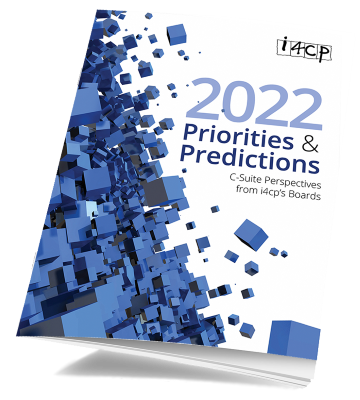Four Priorities for Chief Human Resource Officers in 2022

 The profile of the CHRO (and the HR function in general) has risen exponentially in the past two years in visibility, significance, and recognized contributions to the business.
The profile of the CHRO (and the HR function in general) has risen exponentially in the past two years in visibility, significance, and recognized contributions to the business.
The increased expectations and opportunities for stakeholder impact that now fall on the CHRO are unequalled. The unknowns related to the ongoing pandemic, combined with new hybrid work models and the changing role of the office (including culture implications), talent supply chain disruption, and an ever-changing competitive landscape, are more than enough for any CHRO to take on in addition to traditional HR initiatives.
Add to that the pressures organizations face to show meaningful progress on addressing racial, gender, and social inequities, and to disclose (internally and externally) information and data related to actions and progress on each as well as other aspects of human capital.
To position their organizations to compete and win both near and longer-term, CHROs are laser-focused on strategy to attract, develop, and retain the diversity of talent needed to maximize value to all critical stakeholders. This requires a multi-faceted approach with particular emphasis on the following.
The following priorities and predictions are excerpted from our 2022 Priorities & Predictions report, based on guidance from our Chief HR Officer Board.
1. Enabling the organization to source skills and capability where and when needed
CHROs will focus on identifying and leveraging untapped (or hidden) value (e.g., skills, capability, passion) in their existing workforces. This will be accomplished primarily through technology that matches employees with projects, tasks, or assignments that align their personal interests with the needs of the business (e.g., internal talent marketplace). It will also be accomplished through prescriptive skilling initiatives and programs that target gaps and provide intentional pathways for all workers to build the skills, establish relationships, and gain the experiences that will allow them to contribute at high levels both now and well into the future.
Beyond the current workforce, CHROs will also reimagine and reconstruct their talent supply chains to expand access to diverse sources of skills and capabilities (talent ecosystems). While supporting flexible work arrangements and hybrid work models will likely aid in this, the ability to utilize alternative talent pools (e.g., talent from key partners/customers, people with disabilities, automation and robots, gig/freelancers, academic institutions, and trade schools) will contribute greatly to enabling capability, capacity, and agility where and when needed.
As we noted in the 2021 Priorities & Predictions report: The ability to move talent—as well as innovative ideas and critical knowledge—across the organization’s ecosystem can help build and develop bench strength in critical roles, establish and strengthen key interdependencies, as well as breakdown destructive silos.
2022 will be the year this is put into action.
2. Ensuring a consistent experience for workers across all work models
The future of work is now. Not only has the traditional notion of the office changed forever, but a hybrid work model in one form or another is being adopted for the foreseeable future by most organizations. This requires renovation of policies, procedures, and practices that have defined the cultures of organizations in the past. This will also require a shift in the mindset of leaders, whose behaviors heavily dictate the organization’s culture.
This is critical, as the culture of an organization largely determines the degree of inclusion and belonging employees feel and directly shapes the employee experience, both of which influence the overall well-being of the workforce and how customers experience the company—all are priorities among CHROs. These factors also influence how stakeholders of all types perceive and talk about the organization. This is what defines the brand (i.e., reputation) as both a provider of products/services and an employer.
CHROs will focus in 2022 on ensuring that their employee value proposition not only resonates strongly with the talent they seek to attract and retain, but also reflects in what every employee experiences working for the organization—be it onsite, remote, or hybrid.
3. Realigning and building new capability across HR
With all that’s fallen on the shoulders of the CHRO and the HR function, the threat and incidence of burnout is very real. And with so many factors under HR’s purview that can either propel or derail organizations, what’s needed of HR to best equip the business has evolved; 2022 will usher in greater adoption of technology that lessens the tactical nature of HR’s traditional role, drives greater efficiencies, and frees HR to concentrate on issues that deliver strategic impact to the business.
To deliver on the latter, CHROs must continue to take an analytical approach to their role (i.e., provide data-driven insight and guidance on what matters most). From gathering and making sense of employee sentiment to identifying where in the organization (and why) top talent is deciding to leave for other opportunities, this level of clarity is essential to help the business execute on the areas that pose the greatest risk and opportunity to advance the organization’s strategy.
4. Moving beyond diversity, equity, and inclusion pledges to published goals, action, and accountability
For the second consecutive year, this priority remains a top imperative among CHROs. Recent i4cp research reveals that over the past two years 76% of organizations with 1,000+ employees have made pledges to address racial and social inequities within the workplace; 44% have pledged to address those same issues societally. Following through, making progress, and reporting out on these commitments is something that organizational stakeholders demand, is increasingly mandated by law and/or governing bodies, and emphasized as integral to ESG.
For more insights from Chief HR Officers, download our 2022 Priorities & Predictions report.




